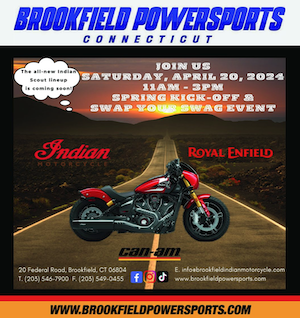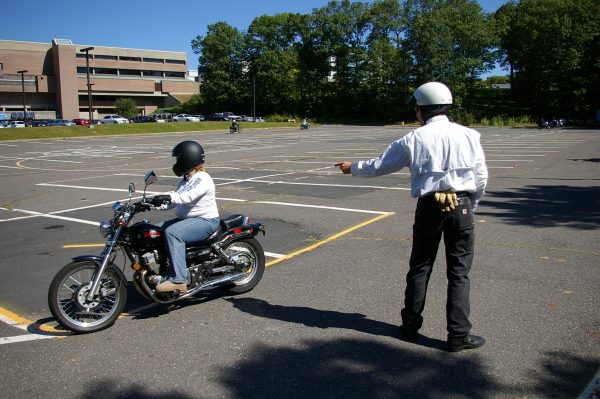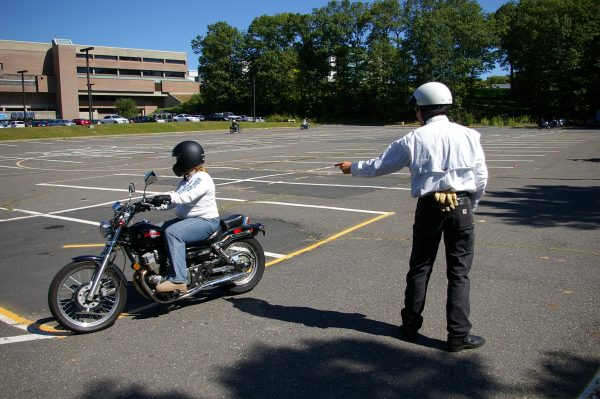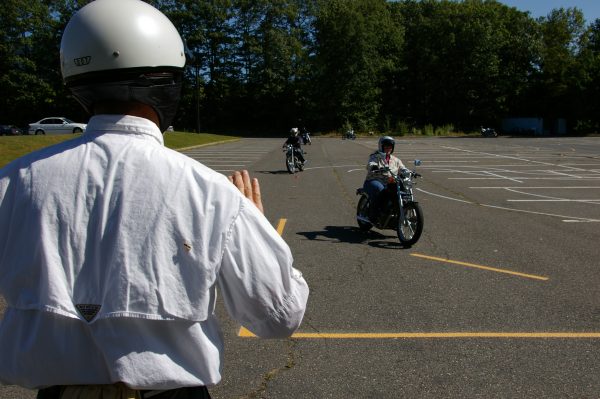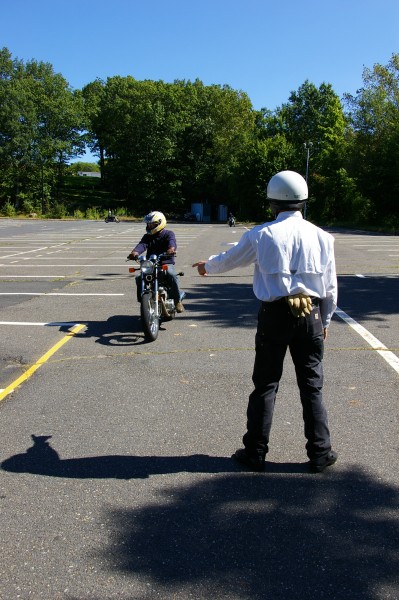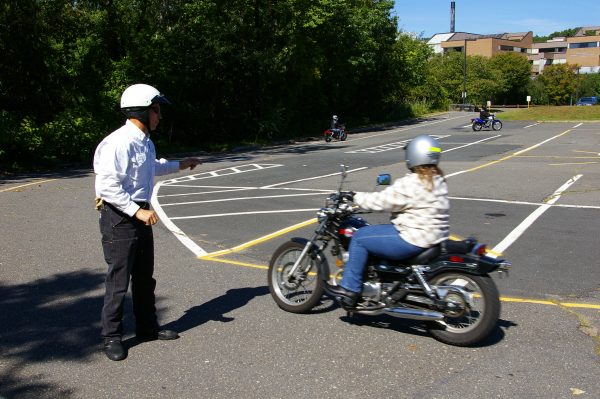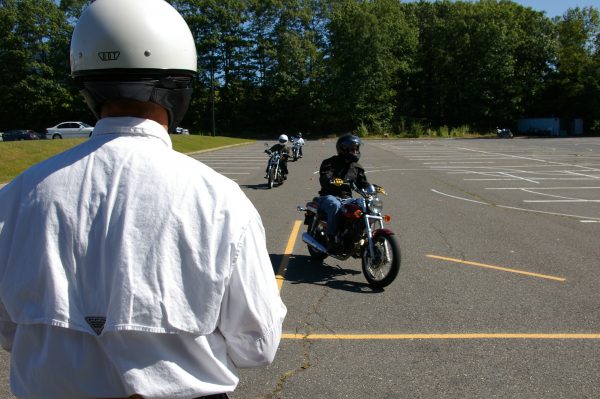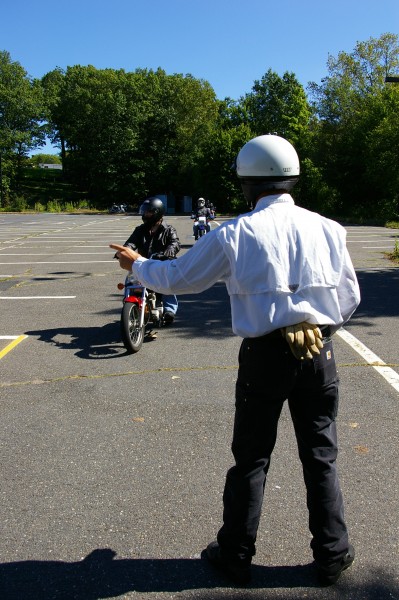Are you a skilled rider? Do you have loads of experience on two wheels or are you a newbie? Are you as knowledgeable as you need to be to stay safe when out riding? The fact is that many riders who have been riding for decades cannot correctly answer basic questions about riding properly. Are you one of them?
Just for the fun of it (and with a nod to Safe Riding columnist Steve Smith for treading on his turf), John Purdy Jr. has come up with a little test based on the Motorcycle Safety Foundation curriculum. The purpose is determine if you’re as smart of a rider as you think you are.
Purdy administers and teaches the CONREP courses at Naugatuck Valley Community College in Waterbury, CT and is an extremely skilled rider.
Here goes with the test:
1) When braking, a rider should?
A. Use the rear brake first, then the front brake
B. Use both brakes at the same time
C. Put both feet on the ground simultaneously for balance
D. Shift to neutral and stop with the rear brake
2) A helmet that has been dropped or had an impact?
A. Must have the inner liner replaced
B. Is not damaged if it shows no outer signs of cracking
C. Should be inspected and probably replaced
D. Should be submitted to DOT for testing before re-use
3) What gear should you be in when coming to a stop and why?
A. 2nd gear, so you can stall the engine when taking off
B. Neutral, to let the engine idle
C. 1st gear, the gear you take off in, when you’re ready
D. Any gear, it really doesn’t matter
4) Motorcycle crashes happen most often?
A. On sparsely populated country roads
B. In curves and at intersections
C. At night
D. On weekends in rush hour traffic
5) To avoid getting trapped while riding?
A. Make an escape decision and stick to it
B. Practice your best escape maneuver on your own
C. Keep more than one escape path open to you
D. Don’t focus on too many options
6) Allowing a four-second gap between you and any vehicle in front of you, including another motorcycle, is important because it?
A. Provides the best distance to see changing traffic light changes
B. Enables you to make turns at higher speeds when following others
C. Is the greatest distance the eyes can see ahead in traffic
D. Allows you enough time to swerve or brake for hazards
7) Having a space cushion enables you to?
A. Predict crash situations
B. Improve risk taking tendencies
C. Respond to situations ahead of time
D. Keep track of your tires’ air pressure
8) To make yourself most visible in terms of lane positioning, you should?
A. Ride in the center of the lane so drivers on both sides of you can see you
B. Select a lane position so others can see you best
C. Use turn indicators and hand signals when changing lanes
D. Apply your brakes from time to time while riding so others are aware of your presence
9) When riding through curves?
A. Remain visible to drivers in opposing lanes by staying in the left portion of the lane
B. Countersteer and brake while in the curve
C. Select a lane position based on traffic, road conditions, and type of curve
D. Search for hazards by keeping your eyes on the road directly ahead of you
10) An effective strategy for making an emergency stop in a curve is to?
A. Apply the front brake only and increase lean angle
B. Straighten the motorcycle, then brake
C. Lightly apply the front brake then apply the rear brake fully
D. Steer toward the right shoulder of the road, then apply both brakes
11) When braking in a straight line during an emergency stop?
A. Slide forward slightly to facilitate weight transfer
B. Downshift and release the clutch lever quickly, then brake
C. Use the rear brake only
D. Keep your body centered and look ahead
12) Depressant drugs such as alcohol?
A. Enter the bloodstream slowly
B. Reach the brain slowly
C. Slow down the body’s functions
D. Must be digested before affecting riding performance
13) When crossing a section of road covered in ice, snow, or sand?
A. Quickly apply both front and rear brakes
B. Slow down, and if possible, squeeze the clutch lever, and coast
C. Accelerate to avoid sliding
D. Downshift, hold the handlebars tightly , then accelerate quickly
14) When riding through curves, you should?
A. View your speedometer to check your speed
B. Be looking down at the roadway center line, as to follow it
C. Look far ahead, holding a steady speed or gradually accelerating
D. Look directly in front of your front wheel, as you roll off the throttle and coast
15) Making a quick stop in a curve requires?
A. Increasing available traction by shifting rider weight rearward
B. Maintaining constant brake pressure at each wheel
C. Grabbing the front brake lever and stomping the rear brake pedal
D. Progressively adding more brake pressure as lean angle is reduced
Answers: 1-B, 2-C, 3-C, 4-B, 5-C, 6-D, 7-C, 8-B, 9-C, 10-B, 11-D, 12-C, 13-B, 14-C, 15-D
 Ride CT & Ride New England Serving New England, NYC and The Hudson Valley!
Ride CT & Ride New England Serving New England, NYC and The Hudson Valley!
